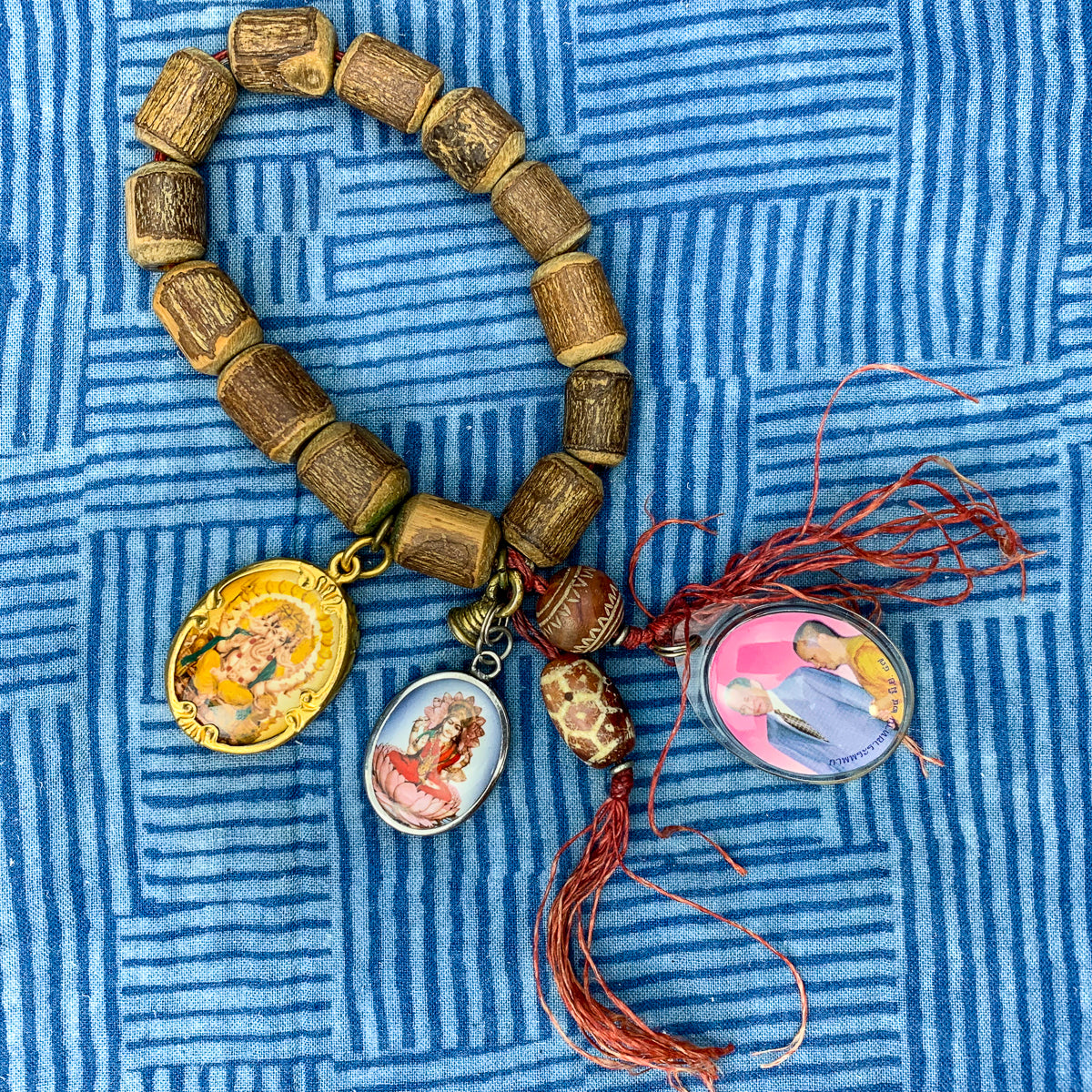Tulsi Wooden Bracelet with Hindu Charms and Ancient Indus Valley Etched Carnelian Beads
Tulsi Wooden Bracelet with Hindu Charms and Ancient Indus Valley Etched Carnelian Beads
Approx Measurements: 8” long, charms longest hangs 3”
Etched Carnelian Beads are a type of Ancient decorative beads made from Carnelian with an etched design in white, which were probably manufactured by the Indus Valley Civilization during the 3rd millennium BCE. They were made according to a technique of alkaline-etching developed by the Harappans, and vast quantities of these beads were found in the archaeological sites of the Indus Valley Civilization. They are considered as an important marker of Ancient Trade between the Indus Valley, Mesopotamia and even Ancient Egypt, as these precious and unique manufactured items circulated in great numbers between these geographical areas during the 3rd millennium BCE, and have been found in numerous tomb deposits.
Carnelian is an orange Chalcedony that comes from the Latin word, “caro,” meaning “flesh”. The distinctive red-orange color of Carnelian is a result of trace amounts of iron. Sometimes the name Sard is used to refer to the darker colors of carnelian. Carnelian is one of the birthstones listed in the ancient Arabic, Hebrew, Italian and Roman tables and is a Zodiac birthstone for the signs of Leo and Virgo. Carnelian has one of the oldest known gemstone histories. It was widely used in ancient Rome to make signet or seal rings for imprinting a seal on letters or important documents (hot wax does not stick to carnelian). Folklore suggests that Carnelian’s healing properties help purify the blood, relieve menstrual cramps and back pain. It is also thought to be beneficial in the treatment of infertility and is worn to enhance passion and desire.














